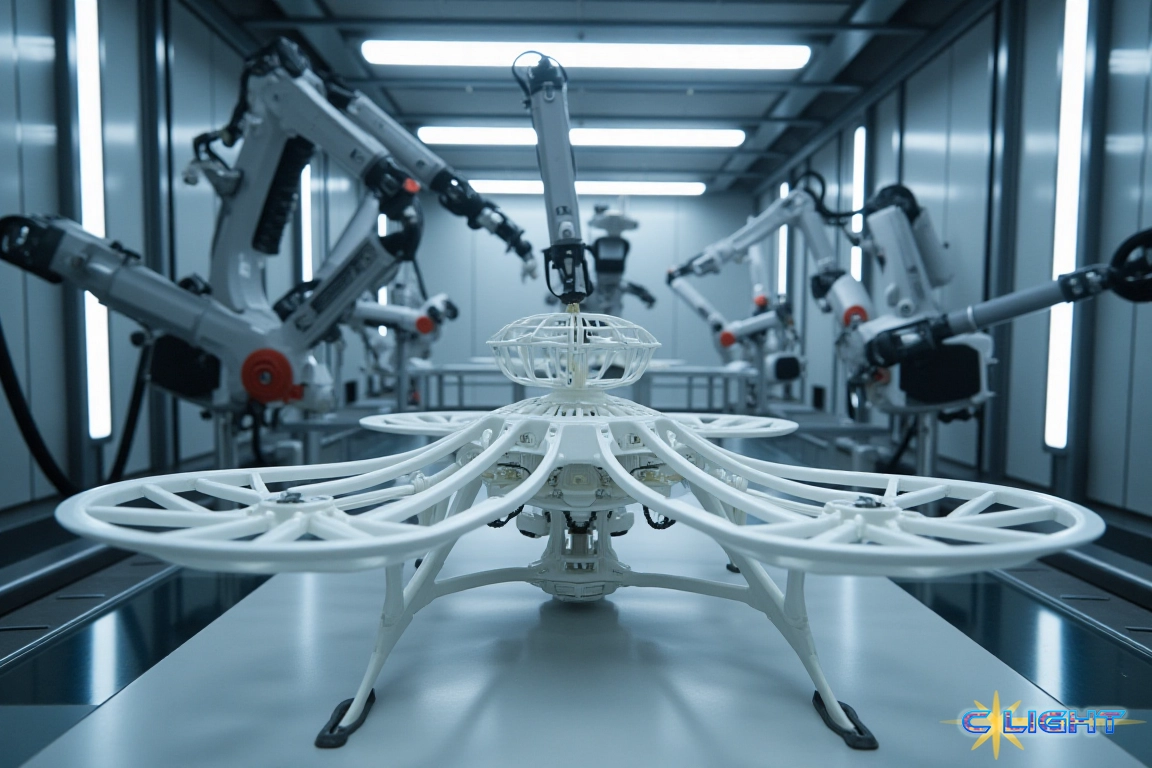The headlines often focus on the grand narratives of geopolitics, but sometimes, the most significant shifts happen in the quiet hum of a 3D printer. A California-based company named Firestorm Labs just completed a staggering $47 million Series A funding round, a financial boom that begs a simple question: What the hell is a “drone-printer,” and why should we care? The answer is both fascinating and unsettling, pointing to a future where warfare and manufacturing are increasingly decentralized, rapid, and, frankly, a little strange.
Firestorm Labs is not just building drones; it’s building the factories that build drones. Their core innovation revolves around what they call “airliftable xCell factories.” Imagine a manufacturing plant packed into expandable 20-foot shipping containers, capable of being deployed in remote locations, powered by generators, and churning out unmanned aerial systems (UAS) – drones – on demand. This isn’t just about making parts; it’s about creating a “decentralized factory of the future,” a “manufacturing layer” that can rapidly produce the very weapons and tools defining conflicts like the Russia-Ukraine war.
The Money, The Mission, The Military
The $47 million funding round was led by major players like New Enterprise Associates, with significant backing from Washington Harbour Partners, and the investment arms of defense giants Lockheed Martin and Booz Allen Hamilton. JPMorgan even contributed $12 million in venture debt. This isn’t speculative tech; this is serious money from serious investors betting on a transformative military application.
And for good reason. Firestorm Labs has already secured contracts with the U.S. Defense Department, including one with the Air Force, potentially worth up to $100 million. This aligns perfectly with a recent, seismic shift in U.S. military strategy: treating small drones (Group 1 and 2, up to 55 pounds) as “consumables” – like ammunition – rather than traditional aircraft. This reclassification slashes bureaucratic hurdles, allowing for rapid procurement, deployment, and replacement. The Pentagon’s new directive pushes authority to lower levels, empowering commanders to quickly acquire and adapt drones for their units, aiming to equip every squad with low-cost, expendable drones by the end of 2026.
Firestorm’s CEO, Dan Magy, envisions a future where they “want to be that manufacturing layer” for this new era of defense. Their partnership with HP, which grants them exclusive distribution rights for HP’s Multi Jet Fusion 3D printing technologies, is a “game-changer,” allowing them to push boundaries in material properties, lightweighting, and high-volume production. They’re developing multiple drone designs, from Group 1 to Group 3, with “Tempest” as their original offering. The ability to rapidly modify drone configurations using 3D printing, combined with AI and machine learning for efficient component creation and assembly, offers an agile and responsive solution to evolving mission requirements.

The Ethical Hum of the “Drone-Printer”
But as with any technology that blurs the lines between creation and destruction, the “drone-printer” raises profound ethical questions. The concept of 3D-printed weapons is not new, and it has long sparked debates about regulation, traceability, and the ease with which lethal tools can be produced outside traditional oversight. While Firestorm Labs is operating within the defense industry, the broader discussion around 3D printed firearms – often untraceable “ghost guns” – highlights the inherent challenges of controlling such accessible manufacturing capabilities.
The ability to rapidly produce advanced weaponry, potentially even in forward operating bases or remote locations, offers undeniable logistical advantages for military operations, ensuring supply chain resilience and rapid adaptation on the battlefield. However, it also accelerates the proliferation of sophisticated tools of war, making them more accessible and adaptable than ever before. This decentralized manufacturing model, while efficient, also raises questions about accountability and control in a world where conflicts are increasingly defined by unmanned systems.
The “drone-printer” is more than just a new gadget; it’s a symbol of a future where manufacturing is on demand, adaptable, and potentially ubiquitous. Firestorm Labs’ $47 million funding boom isn’t just about a company; it’s about a fundamental shift in how “tools of war” are conceived, created, and deployed. It’s a reminder that the most impactful changes often emerge from the intersection of technology and necessity, leaving us to grapple with the ethical implications of what we can now print into existence.
Discover more from Clight Morning Analysis
Subscribe to get the latest posts sent to your email.













